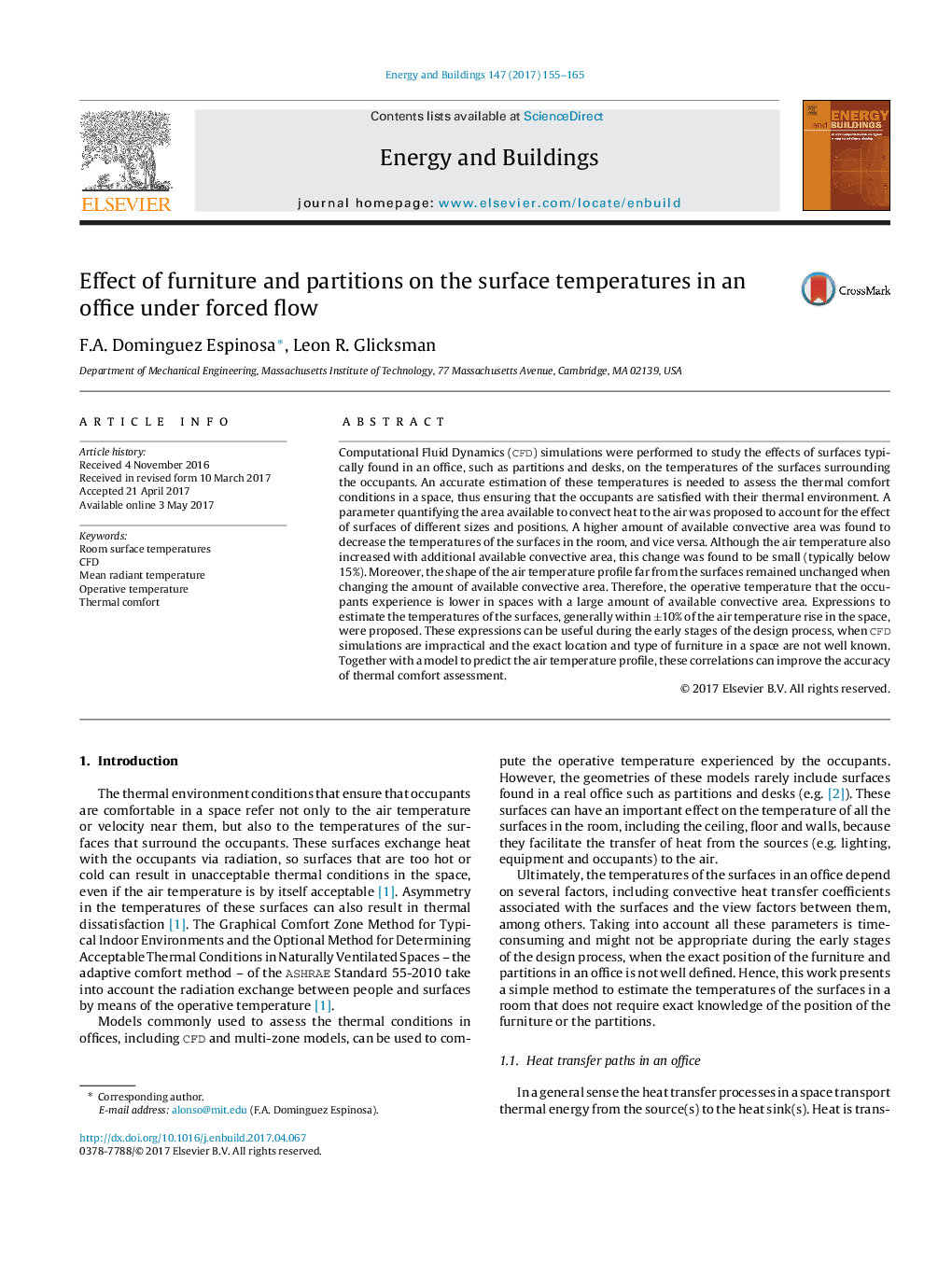| Article ID | Journal | Published Year | Pages | File Type |
|---|---|---|---|---|
| 4919155 | Energy and Buildings | 2017 | 11 Pages |
Abstract
Computational Fluid Dynamics (CFD) simulations were performed to study the effects of surfaces typically found in an office, such as partitions and desks, on the temperatures of the surfaces surrounding the occupants. An accurate estimation of these temperatures is needed to assess the thermal comfort conditions in a space, thus ensuring that the occupants are satisfied with their thermal environment. A parameter quantifying the area available to convect heat to the air was proposed to account for the effect of surfaces of different sizes and positions. A higher amount of available convective area was found to decrease the temperatures of the surfaces in the room, and vice versa. Although the air temperature also increased with additional available convective area, this change was found to be small (typically below 15%). Moreover, the shape of the air temperature profile far from the surfaces remained unchanged when changing the amount of available convective area. Therefore, the operative temperature that the occupants experience is lower in spaces with a large amount of available convective area. Expressions to estimate the temperatures of the surfaces, generally within ±10% of the air temperature rise in the space, were proposed. These expressions can be useful during the early stages of the design process, when CFD simulations are impractical and the exact location and type of furniture in a space are not well known. Together with a model to predict the air temperature profile, these correlations can improve the accuracy of thermal comfort assessment.
Related Topics
Physical Sciences and Engineering
Energy
Renewable Energy, Sustainability and the Environment
Authors
F.A. Dominguez Espinosa, Leon R. Glicksman,
